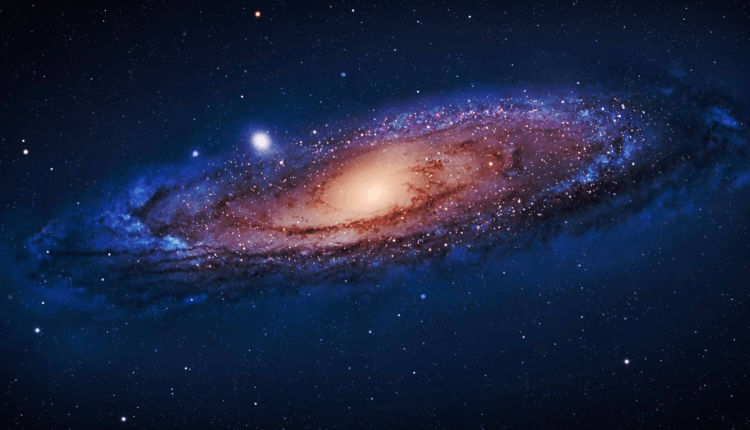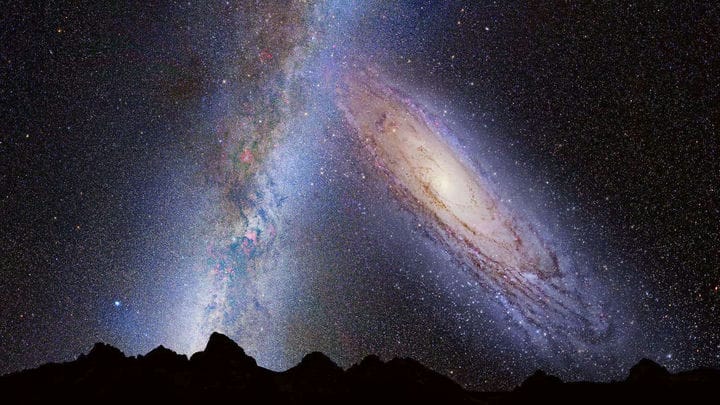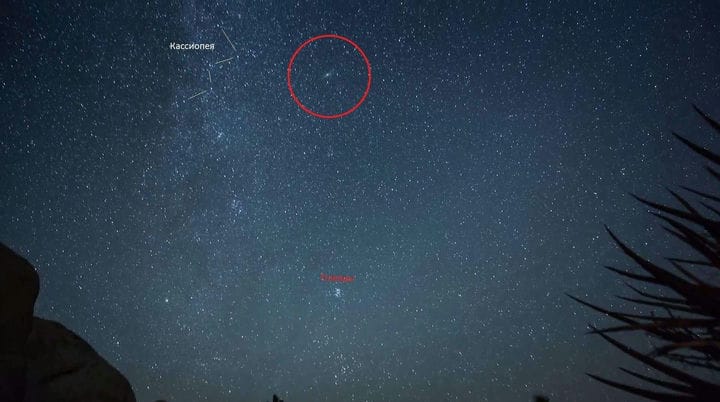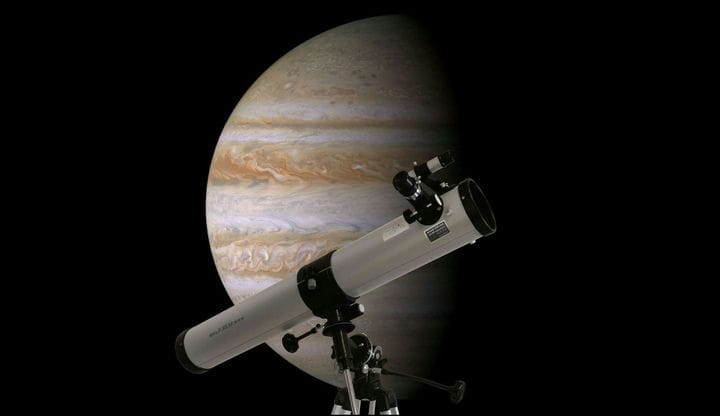Astronomers believe that in the distant future, the Andromeda spiral galaxy is likely to collide with the Milky Way. There are several hypotheses for the development of events. The opinions of scientists are divided into two camps.
The probability of a collision of galaxies
The nebula is located at a distance of 2.5 million light years from Earth. It is considered the closest galaxy to the Milky Way and has more than a trillion different stars. Both celestial bodies formed 13.5 billion years ago. When the Universe expands, all galaxies move away from each other, but not the Milky Way from the Andromeda galaxy nebula. Instead, he moves towards her.
The heavenly bodies will collide in 4 billion years (it was previously thought that this would happen somewhere from 3 to 5 billion years). Scientists have long believed that in the distant future two galaxies will collide, but they did not have reliable data on this. This hypothesis became more and more popular every day, not only in scientific circles, but also in science fiction literature.
The speed of the M31 is approximately 120 km / s. However, according to the data obtained, it is difficult to understand whether the heavenly bodies will collide or not in the distant future. In 2013, the European Space Agency launched the Gaia space telescope. Thanks to him, the location of all the stars in the Andromeda galaxy became known. Based on the data obtained, a model was compiled, from which it became clear that before the collision with M31, the Milky Way could stumble upon the dwarf galaxy M33. The probability of this is 9%. It is believed that they already encountered about 10 billion years ago.
What will happen to the solar system as a result of the collision of the Milky Way and the Andromeda galaxy?
With the naked eye from Earth, it is difficult to see manifestations of the collision of the Milky Way and the Andromeda galaxy. There will be no impact on the planet and the Sun. There is a possibility of ejection of the solar system from the new galaxy due to the forces of gravity during the collision, after which it will become an independent wandering object. This will not affect our system in any way, except for the gradually disappearing starry sky.
Watch the video about 7 facts about the Andromeda Galaxy.
Scientists believe that with a probability of 12% after the first collision there will be a departure from the disk, and the capture of M31 is estimated at 3%. The evolution of the Sun during this period is much more important for all life on Earth, since it will turn into a red giant in 6 billion years.
How to find the Andromeda galaxy in the sky?
Finding the Andromeda galaxy in the sky by the stars is not difficult. To search, you will need a telescope and binoculars. It is better to look for a winter or autumn dark night. At first it will be difficult to find the nebula, but then it will be difficult to forget its location.
You can find M31 as follows:
Tools you will need to observe the star of the Andromeda galaxy
It is possible to consider where the nebula is located only with the help of special tools. It is impossible to do this with the naked eye. First you need to find the location of the nebula, which looks like a dim oval and blurry spot. After that, you can observe the galaxy through binoculars or a telescope.
For a more detailed study, a reflective twenty-centimeter telescope should be used. Thanks to him, you can better see the core of M31 and its two satellites. Due to its huge dimensions, it does not fit entirely in the telescope, so it is better not to set the magnification at all or use the minimum settings. It only seems so small when studying the sky without special equipment.
If you look at the nebula through binoculars, it will look like an oval cloud. Ordinary binoculars can be used, but it is best to use 7×50, 8×40 or 10×50 lenses as this will give you a clearer picture of the nebula.
Andromeda’s sleeves are dim, so they are invisible. You can only observe its core. To make them appear, you need to photograph with a long exposure, using a variety of camera attachments. The resulting image must be combined using special software. Good luck searching for the Andromeda galaxy and the Milky Way. Good luck in your exploration of the sky!



